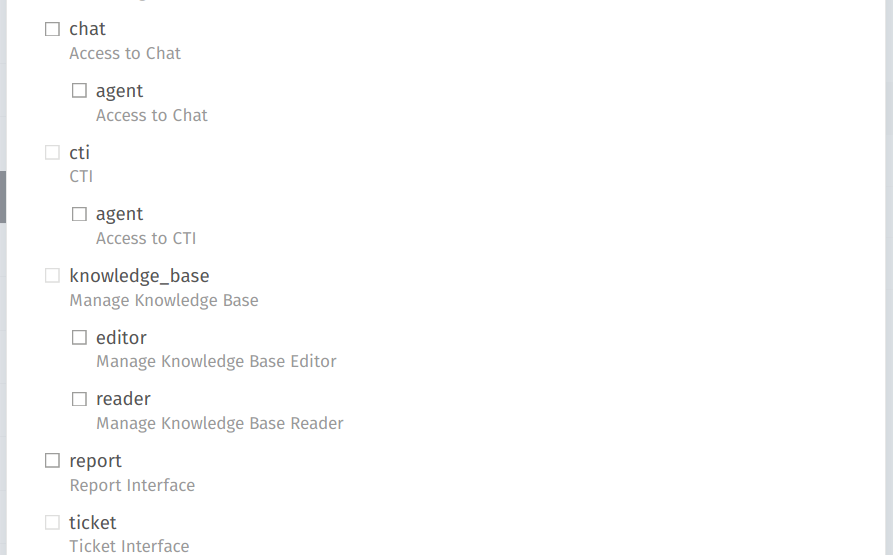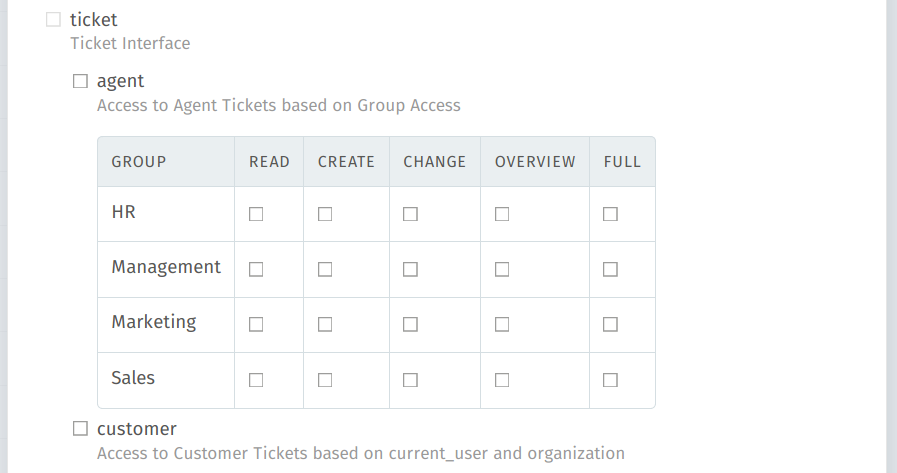Agent Permissions¶
Note
The permissions listed on this page grant access to features that have to be enabled or configured system-wide in the Admin Panel first.

Agent permissions are shown in the middle of the New Role dialog…¶

…and give users access to new sidebar tabs for communicating with customers.¶
chat.agent-
Hint
🤓 Requires configuration of Chat Channel
cti.agentProvides access to 📞 Caller Log
- knowledge_base
-
knowledge_base.editorcreate/edit privileges
Hint
Editor permissions always include reader permissions.
knowledge_base.readerread privileges for internal content
Hint
Public articles are always visible.
Tip
Zammad supports granular permissions on knowledge base categories.
This function allows agents with editor permissions to restrict specific internal categories & answers to chosen roles.
In order to allow your agents to set granular role permissions, the roles in question require at least reader permission for the knowledge base.
Danger
Keep in mind that this may be dangerous, as reader permission provides access to internal answers!
report-
Warning
🙅 Never grant this permission to your customers.
Giving customers access to reporting constitutes a serious data breach, as it includes all ticket and user information across the entire system!
Note
This permission is the exception to the rule on this page:
the feature it enables is not for communicating with customers;
the button appears at the bottom of the sidebar; and
it is typically reserved for admins and supervisors.
ticket.agent-
Note
🤔 What’s this big table doing here in the middle of my permissions?

The group access table is shown when there is more than one active group in the system.¶
Okay, so remember when we said that “roles are just collections of permissions”? That wasn’t entirely true—they can also be collections of group access levels.
To learn more, see Group Access Levels.
Hint
🤓 Point of technicality
As of Zammad 3.5, you can assign both agent and customer roles to the same user—but but you can’t assign both
ticket.agentandticket.customerpermissions to the same role!To make it work, you need two separate roles: one with
ticket.agentand the other withticket.customer.